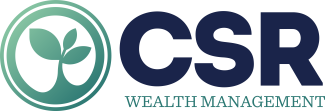
4 Ways to Maximize Your Canada Child Benefit
The Canada Child Benefit (CCB) is a tax-free monthly payment made by the government of Canada to eligible families to help them with the cost of raising children under the age of 18.
Here are 4 ways to maximize your CCB:
1. Contribute to an RRSP to increase the CCB
The amount you receive for the CCB is based on the total family income reported on your annual income tax return for the previous year. Therefore, if you contribute to your RRSP, which lowers your taxable income, your CCB amount will increase. The bonus: you’ll also be saving for your retirement.
Other ways to lower your taxable income include: Employment expenses, union or professional dues, moving expenses, pension adjustments, child care expenses. Find a complete list here: https://www.canada.ca/en/financial-consumer-agency/services/financial-toolkit/taxes/taxes-3/2.html
2. Contribute to an RESP to receive grant money
If you are able to afford it, use the Canada Child Benefit to get more free money. Apply all or a portion of the CCB to contribute to an RESP. Each dollar you contribute earns 20% more from the Canadian Education Savings Grant (CESG), up to $500 a year.
Example: If you receive $300 in CCB a month, and you deposit $210 of it each month to an RESP, for a total of $2,520 a year, the CESG will deposit an additional $500 into the RESP account. Bonus: you earn the interest on the total of $3,000.
3. Contribute to an RDSP to receive grant money
If your child qualifies for a Registered Disability Saving Plan (RDSP), consider using the CCB to contribute to it. Like an RESP, the federal government offers a grant called the Canadian Disability Savings Grant (CDSG), which matches your contributions (rates are based on family net income and the amount you contribute). Learn more here.
4. Open an in-trust for (ITF) account to save money for a child tax free
Another option is to take advantage of the special rules set up to allow funds from the CCB to be invested in an in-trust for (ITF) account in the child’s name. The benefits are:
a. Once the child is age of majority and can access the funds, they can use it for anything (unlike an RESP which must be used for education).
b. The interest, dividends and capital gains are taxable to the child, not the contributor. (Note: This is only the case for CCB funds. Additional money deposited to the in-trust account is taxable to the contributor).
Presumably the child won’t have an income greater than the basic personal amount (currently $12,069 for 2019) and therefore, the investment would be allowed to grow tax free until they reach age of majority (18 in Ontario).
The caveat is that there are a lot of rules around ITF accounts, which you should research thoroughly before choosing this option.

